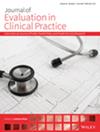Process & Outcome Evaluation of a Rural Health Network to Assess Effectiveness
Abstract
Background
Rural residents face many health disparities and challenges. Rural health networks form to address the specific needs of a community by bringing together multiple individuals and organisations; however, there is limited literature on the evaluation of these networks.
Objective
To evaluate a network's effectiveness in three areas: (1) capacity to achieve change in palliative care education, (2) key results of collaborative efforts, and (3) extent to which grant activities were implemented.
Methods
Grant required evaluation measures were used to answer area one and three: key sector representation, network organisational assessment, external environmental scan, and SWOT analysis. To answer area two, knowledge and commitment to change were evaluated after a palliative care symposium.
Results
The network was proficient or excelling in all 15 areas of a Network Organisational Assessment and represented all 38 key sectors representing the focus of network (palliative care). Through repeated external environment scans and analysis of the strategic plan, the network continually evaluated the landscape in which it operated enabling the network to adapt and capitalise on opportunities. The outcome evaluation of the network's symposium revealed that most participants reported improvement in their ability to impact patient outcomes (59%), overall confidence and performance (65%), and knowledge of palliative care (78%). Nearly all participants reported better communication and collaboration with a multidisciplinary team (96% and 97% respectively) and intent to apply what they learned in their team (97%). Practice changes included commitment to improving their patient education, communication, and teamwork.
Conclusion
The network's evaluation demonstrated its effectiveness in three areas. This article adds to the limited literature on network evaluation by presenting practical tools to grow, engage, and evaluate a network so other rural health networks can replicate these evaluations to assess their effectiveness.

 求助内容:
求助内容: 应助结果提醒方式:
应助结果提醒方式:


